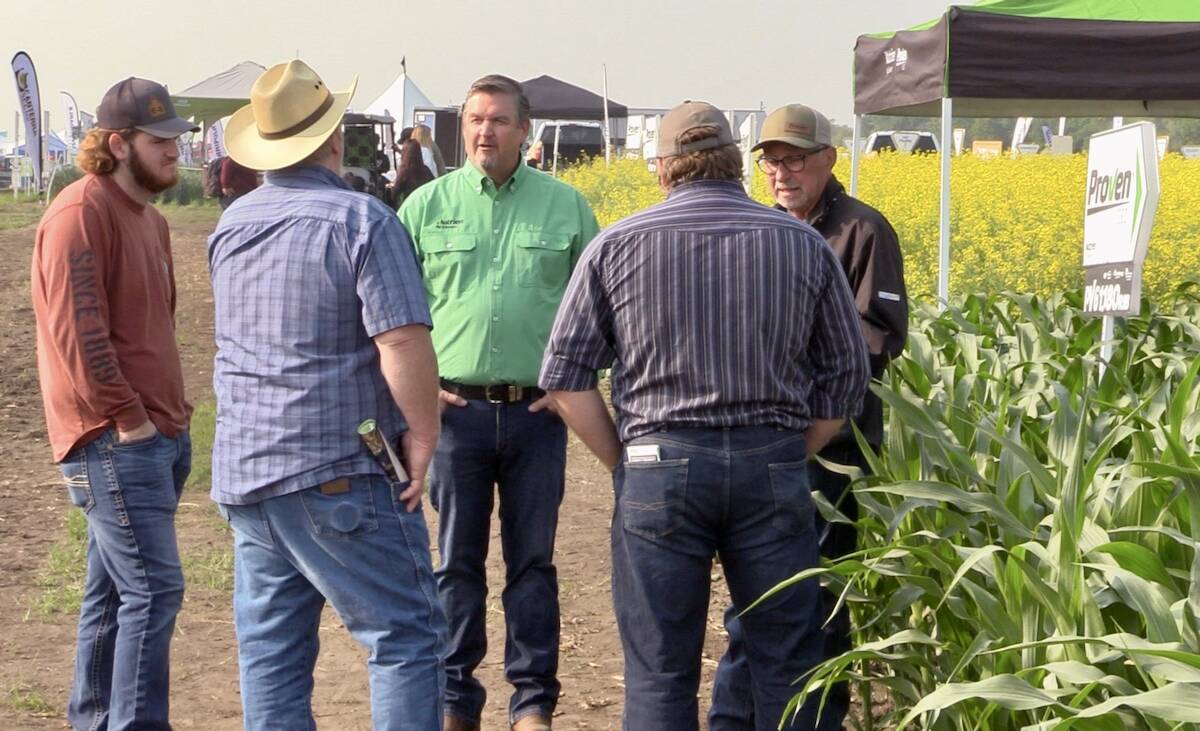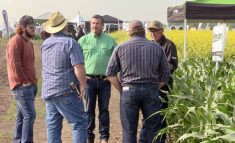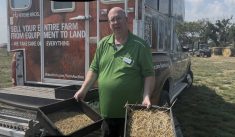SCOTT, Sask. – Shelterbelts are hard enough to plant and water, but controlling the weeds is a chore that makes time-strapped farmers reluctant to start new plantations.
New trees compete poorly with other plants for nutrients, water and light.
Spraying herbicides is too risky for young trees and tillage too time consuming.
There is a solution and the best part is it’s free to farmers in Manitoba, Saskatchewan, Alberta and British Columbia’s Peace region.
The Prairie Farm Rehabilitation Administration is offering farmers what is called plastic mulch and will lend them a machine that lays it around the seedlings.
Read Also

Interest in biological crop inputs continues to grow
It was only a few years ago that interest in alternative methods such as biologicals to boost a crop’s nutrient…
The plastic mulch is a permeable, rip-resistant roll of ultraviolet-inhibiting, 2.7 millimetre thick, black plastic that prevents weed growth along shelterbelt rows.
Once the trees are planted, the mulch applicator, towed by a tractor of at least 30 horsepower, passes over the tree row covering it with the 1.2-metre-wide plastic sheet.
The operator of the mulch machine pierces the plastic over each covered tree with a double cut swather tooth mounted on a broom handle. The trees can then be pulled through the hole in the plastic.
The plastic mulch can be applied up to a year after the seedlings go into the ground.
Charlie Salisbury of PFRA in North Battleford, Sask., said, “the key to success with this machine is the site preparation.”
The soil around the tree row must be tilled and levelled so it is even and the disks on the machine can cover the plastic, he said.
The tractor operator needs to make a few practice runs in a field area prepared similarly to the rows.
“You want it like a good summer fallow,” said Salisbury.
Disks on the hydraulically actuated unit cover the first 25 centimeters of each outer edge of the plastic, anchoring it into the soil.
Salisbury said a little extra soil or a half-kilogram stone will help keep the plastic flat at the tree and prevent heat from building and exiting the plastic at the hole.
The plastic also helps prevent mud splashing during heavy rains. This prevents fungal, soil-borne diseases on leaves or fruit.
The federal Action Plan 2000 on climate change is providing funding for the project. As a result, the trees must not be used for commercial harvesting and must be of a species that sequesters carbon.
Each roll of plastic is 120 cm wide and 600 m long, weighing about 34 kilograms.
“It’s enough for one strong guy or, better yet, a couple of folks, to change rolls,” said Salisbury.
The machine was designed in part at PFRA’s shelterbelt centre in Indian Head, Sask. There are about 15 machines operating across the West, built by EGB Manufacturing of Cochrane, Alta.
















